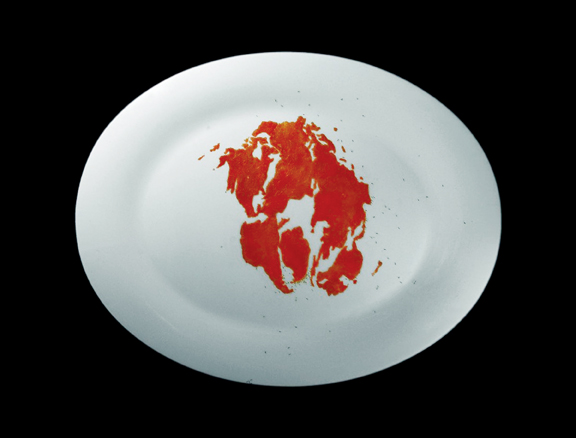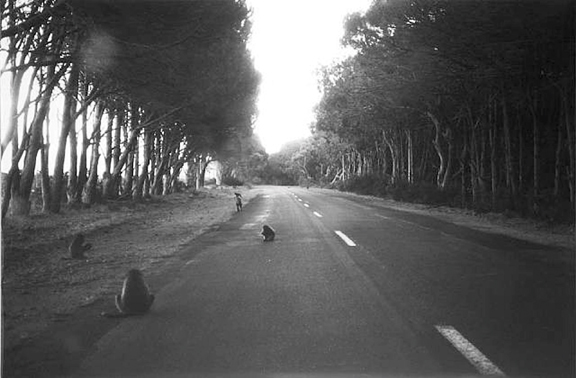[Spring 2009]
Pittsburgh, Pennsylvania,
May 3, 2008–January 11, 2009
Despite fulfilling several different roles during its century-plus history, the Carnegie International exists today as a quadrennial exhibition of international contemporary art. This second-oldest exhibition of its kind opened just months after the first edition of the Venice Biennale, but today the Carnegie International is only one stop in an ongoing global cycle. With each subsequent edition, the exhibition and its institution stand in stark contrast with the proliferation of hundreds of younger biennials that draw upon strategies of site-specificity in order to establish a self-reflexive discourse with the communities in which they are based. Like the Whitney Biennial, each edition of which is dictated primarily by the site of the organizing institution, the Carnegie International must address international contemporary art and its socio-political climate within an exhibition site that is demarcated by the galleries of the Carnegie Museum of Art.
While Life on Mars curator Douglas Fogle deserves credit for a heuristic installation methodology that has the viewer encountering the exhibition in spaces outside of the museum’s contemporary galleries, including the exterior courtyard, the corridor leading to the curatorial offices, and even the roof, the most successful strategy that Fogle deploys in addressing what he calls a world “in which global events challenge and threaten to overtake our everyday existence” is an emphasis on artists’ projects in photography and other image-based media, including film and video. In the first chapter of On the Museum’s Ruins, Douglas Crimp proposes that the photographic image, based upon its function as document, fulfils a radical role within the institution of the museum, directing the viewer to a reality beyond the walls of the museum. The photo-based projects in Life on Mars critically formulate a frame through which the outside world is allowed entrance, thus challenging not only the autonomy of the exhibition and institution, but also the position of the viewer.
The role of photography in reshaping institutional space is perhaps most evident upon entering one of the largest exhibition spaces devoted to a single artist in Life on Mars. Here, in the cavernous Carnegie Museum of Art Theater, Sharon Lockhart’s feature-length 16 mm film Pine Flat (2005) is being screened twice daily for the duration of the exhibition. The culmination of years of research in the eponymous community in rural California, Pine Flat has a structure that is informed by an extended contemplation of the artist’s young subjects, composed of twelve static ten-minute takes of children from the community at play and rest, both alone and in groups. These images of American youths in the lead-up to the inauguration of George W. Bush’s second term in office are meticulously recorded by Lockhart. These are the children of our time, those who have only ever known an America at war, New Orleans as a devastated city, and photography as digital and malleable, not as physical material. Outside the cinema, a series of nineteen large-format photographs of children from the same community, titled Pine Flat Portrait Series (2005), extends Lockhart’s project beyond the duration of the film and, in doing so, invites the viewer to contemplate the future function of the photograph as museum object after the life of the exhibition has expired.
While the ethnographic impulse of Lockhart’s project emphasizes the role of the artist in production of the image and the deployment of the photograph in the ser-vice of an archive, elsewhere in the exhibition the photograph circulates as found image, the product of parallel histories. The presentation of work by Wolfgang Tillmans in Life on Mars is highly fragmented and encompasses a variety of modes in which the photographer is known to work, including abstraction and portraiture.
His installation forsakes the tidy boundaries of the museum space to present a tactile patchwork of photographs that have been simply tacked or taped to the wall, or even laid out upon tables. The artist’s dissolution of boundaries extends to the dichotomy between public and private with his incorporation of found press photographs alongside his images. Here, among the photographs scattered upon surfaces, emerges one of the starkest images in the entire exhibition, the haunting illustration of a press headline that reads, “Two Iranian teenagers, sentenced under Sharia law, are publicly hanged for the ‘crime’ of homosexuality. Mashhad, 2005.” Well known for documenting queer culture, in which he is a major figure, Tillmans not only opens the museum to the events of the world beyond, but, more importantly, embraces this found image as part of his own continuing history, transferred from an ephemeral existence demarcated by time to a public presence in the occupation of space.
In contrast to the projects in Life on Mars that situate photography as a mnemotechnology, Rivane Neuenschwander’s Pangaea’s Diaries (2008) is a scenario without humans, an animation composed of a series of digital photographs, transferred to 16 mm film for projection. Neuenschwander has used a stop-frame animation technique to record hundreds of ants as they consume a plate of meat, an image that echoes the formation of Earth from the massive supercontinent of the film’s title to the separation of the seven continents. With her photographic sequence making visible a process that is normally unseen, Neuenschwander, like Lockhart and Tillmans, asserts that it will be the underestimated or the largely unobserved that will shape the world, and in doing so she provides the most astute metaphor for Life on Mars and the project of the Carnegie International: the divisions of the world are temporarily mediated by way of the image, and yet, this assembly is a vision that cannot hold, it will soon disperse, and in time, we will begin again.
Jacob Korczynski is a curator currently based in Toronto, where he is the programmer at the Images Festival and a member of the Pleasure Dome collective.



